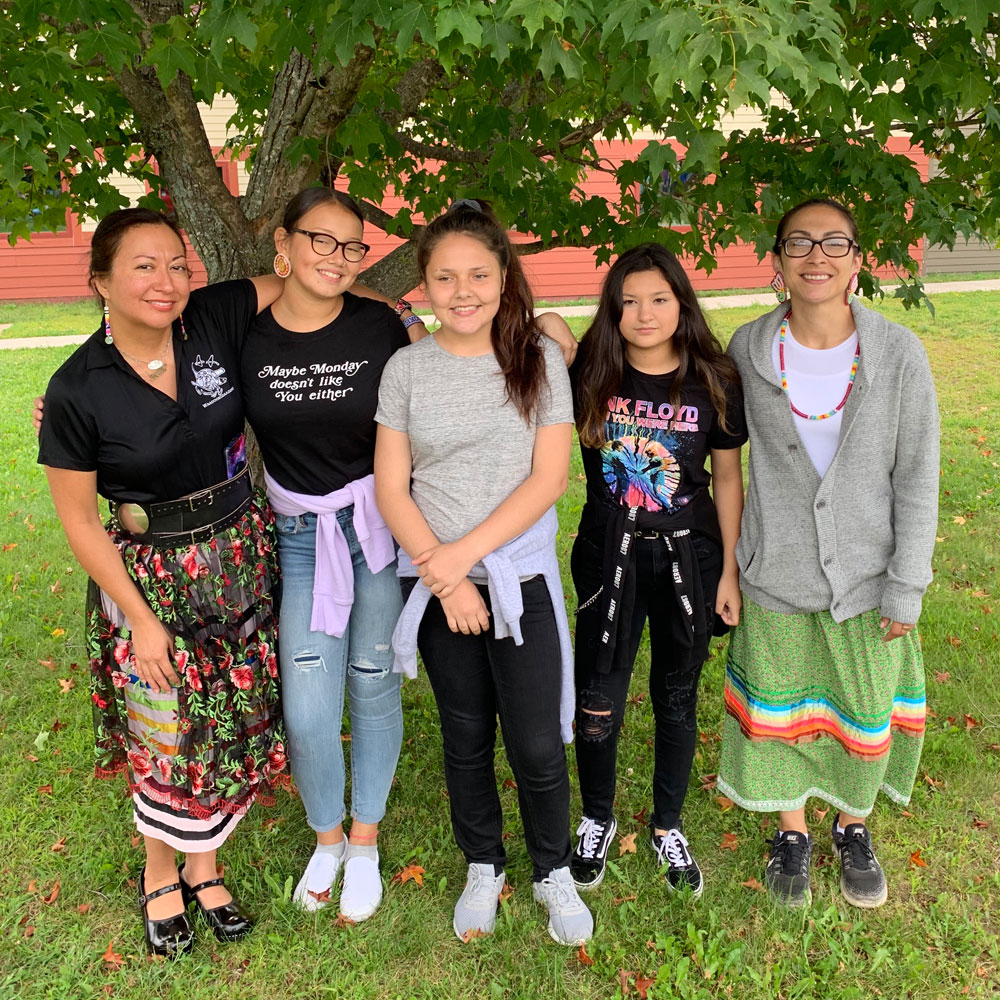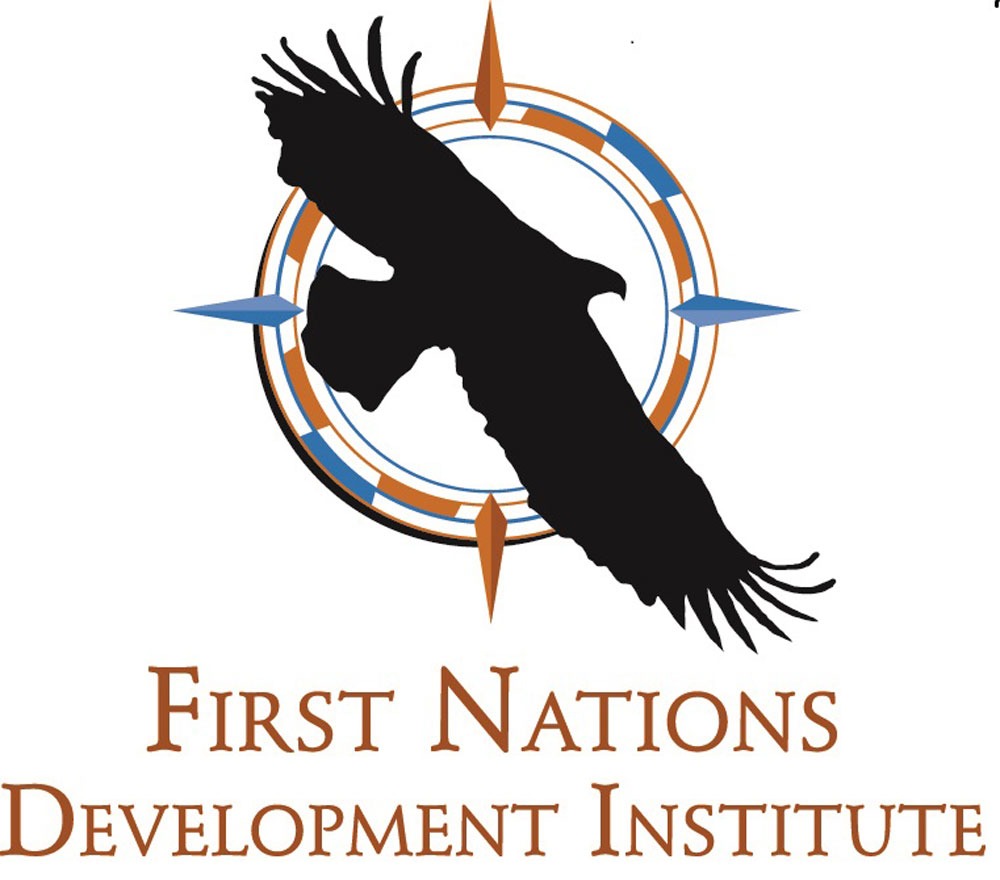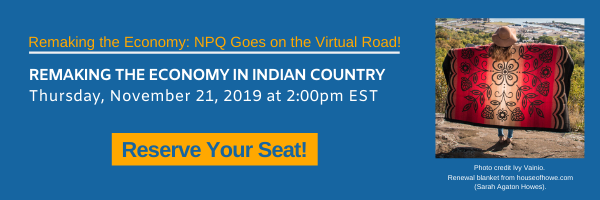
This article is the fourth in a series that NPQ, in partnership with the First Nations Development Institute, is publishing this fall. It features Native American activist-writers who highlight the practices of community building in Indian Country and identify ways that philanthropy might more effectively support this work.

Language is the connection that binds all relationships and provides a central foundation for understanding. Many of the challenges that Native communities face are the result of trauma stemming from colonialism and the Indian boarding school, which sought to remove children from—in the words of one early-20th-century white assimilation advocate—“the influences of the wigwam, dance, and the migratory habits of their race.” Restoring indigenous languages is a central means to begin to reverse the impact of this historical trauma.
In 2018, First Nations Development Institute and Frontline Solutions released We Need to Change How We Think, a report that served as an introductory communication bridge between philanthropy and Native organizations. I want to further the conversation by including the perspective of a particularly well-developed Native organization, Waadookodaading Ojibwe Language Institute (WOLI), both to make general observations and to highlight some that are specific to indigenous language and culture revitalization.
When I was born, before the passage of the American Indian Religious Freedom Act of 1978, it was illegal for American Indians to openly practice cultural traditions, such as the ceremony of giving a child an Ojibwe name. The ceremony, which in my community is conducted entirely in Ojibwe, was conducted despite the law. This is the direct result of my grandfather escaping from boarding school at the age of nine and traversing a 75-mile journey back to his parents, on foot, after being forcibly removed from his home. His family hid him in the woods when authorities came to take him back. They wanted him to learn and live the Ojibwe life and language.
In a 1901 article, local lumberman and assimilation advocate R.L. McCormick wrote that “the only effective method to improve American Indians’ condition would come from the non-reservation Indian boarding school, where the children are removed from the influences of the wigwam, dance, and the migratory habits of their race.” His advocacy resulted in the construction of the Hayward Indian Boarding School, and students from Lac Courte Oreilles, as well as other reservations further away, including my own, were brought there in hopes that children’s isolation from their families would hasten assimilation.
This is the experience our community has with education. And the results have been devastating. Graduation rates and higher education attendance are low, suicide rates are high, parent and family engagement nearly non-existent. Research points to the effectiveness of culture and language as a factor in prevention of suicide. A Canadian study found that in indigenous communities that shared poverty rates and levels of rural isolation, suicide rates for adolescents and young adults varied widely. The variable has been identified as the extent of cultural continuity within the community.
“Whereas suicide rates were largely unrelated to measures of poverty and isolation, they were strongly related to measures of cultural continuity, including efforts to regain legal title to traditional lands and to re-establish forms of self-government, to reassert control over education and other community and social services, and to preserve and promote traditional cultural practices,” one study finds (Chandler & Lalonde, 2008). This validates what we have observed in our work at Waadookodaading, that students are confident, resilient, and academically engaged, and that parents and families are communicative and collaborative with the teachers and staff of the school. Language and culture revitalization are not simply an effort to hold on to an idealized past, they are a vital component of community wellness in modern indigenous communities.
The WOLI is located on the Lac Courte Oreilles Ojibwe Reservation near Hayward, Wisconsin, and is at the heart of the Ojibwe language revitalization movement in the United States. The Institute began as a half-day Ojibwe language immersion kindergarten program in 2000. In the next 15 years, the half-day program evolved into a charter school, then into a track within a Bureau of Indian Education school within a more clearly defined Institute model. The Institute developed as the language revitalizationist community recognized that moving forward required a redefinition of the activities that surround rebuilding indigenous languages. Beside the K-8 Ojibwe language school, the Institute functions to develop immersion teachers and curriculum, actively research and develop resources to expand the scholarly repertoire of the indigenous language revitalization field, and support community language revitalization, including outreach and technical assistance to other tribal nations and programs.
Beyond the constant research on teaching and learning in a second language, the administrative staff and board are composed of people who have determined that successful language revitalization requires a systemic overhaul of more than one power structure. Language revitalization requires rethinking Western educational philosophy, realization of equitable access to systems of government, indigenization of research approaches, and rural economic development, with more to be identified as experience and knowledge expands. There are organizations that have necessarily done the work of examining needs and growth, and they are prepared and able to articulate those to other organizations. Established organizations with a history of development and a core group of long-serving staff and members should be sought out to assist in these discussions.
This itself brings up an important point that supports the conversation—namely, that whether it be the result of unreconciled racial bias, lack of knowledge, or a historic legacy of mistrust, philanthropic organizations looking to fund Native organizations must recognize that there are highly reflective professionals in the field. Waadookodaading is made up of the most skilled educators in the US, with the specialized knowledge of both Ojibwe language and culture as well as the mainstream academic research on brain development, literacy, and language acquisition.
Sign up for our free newsletters
Subscribe to NPQ's newsletters to have our top stories delivered directly to your inbox.
By signing up, you agree to our privacy policy and terms of use, and to receive messages from NPQ and our partners.
Native organizations need assistance understanding the economy and finances. A legacy of poverty has left communities with a range of experience and education, or with limited understanding of how to raise, manage, and invest non-governmental funds for future use. Because of the tendency to rely upon short-term federal grants and sporadic charitable donations, dependency has become an organizational habit.
Native organizations are asked to define and redefine the work to match the funding requirements of philanthropic organizations to make it through the next three-year funding cycle. I could speculate, again, on the reasons for this, but the bottom line is that Native interests are not represented on foundation boards and we are not recognized as experts in our communities. Colonizer-defined authority has historically negated indigenous knowledge, in the same spirit of the R.L. McCormick approach, that indigenous people are unable to know what is best for them.
Fostering a thought process of reciprocity is a key principle to establishing long-term healthy relationships. With this foundation, we can create stable sources that fund Native organizations in an effort to share and replicate success that likely resulted in the philanthropist being in a position to give. There needs to be a sharing of knowledge and wealth to diminish dependency.
Turning more specifically to the foundations for understanding indigenous language and culture revitalization is to realize the scale of significance of the work within an indeterminate time frame. Most of our collective achievements will never be realized in our lifetime, which we have learned in the field through the loss of our elder language and culture bearers. We watched as they spent time recording, speaking, correcting, directing, planning, and hoping we would continue when they left.
At Waadookodaading, we have been working with a systematic and spiritual approach for 20 years and are only now on the verge of reaching a critical (yet seemingly small) mass of proficient speakers who are younger than 55, one of the key indicators of language vitality and potential for continuation. If we are to partner, we must join together and accept that in serving our language, our practices, our children, and our lands, we serve the future.
I will add a bold, possibly controversial, statement that comes from my years of work in language and culture revitalization: Cultural revitalization, food sovereignty, and land protection will not occur without language reclamation. Language is the connection that binds all relationships and provides the foundation for understanding the world. It cannot be an afterthought in the successful assertion of sovereignty. I welcome discourse that will change my mind.
Language revitalization is an investment that pays off in unanticipated ways. If we set aside entrenched assumptions that Western mainstream education is the best type of education for all, we can understand that the work of organizations like Waadookodaading have the potential to influence philosophical changes in the approach to education in the United States.
The scholarship, professional development, and results from the field that come from years of work in community-based engagement and planning, second language acquisition, bilingual literacy, and culturally based social and emotional development, to name only a few of the realms of knowledge that intersect in this field, have the potential to benefit a wider audience of educators.
Additionally, though not widely documented at this time due to many factors, including the basic devaluation of indigenous-led endeavors, the impact of language revitalization on local economies is significant. In the case of Waadookodaading, professional Ojibwe families (or to use a term I have coined, “PrOjibwes”) who are also practicing traditional culture and using the Ojibwe language have relocated to Lac Courte Oreilles so their children can attend the immersion school. They bring the experience, education, entrepreneurial initiatives, and desire for reconnection to Ojibwe life, as well as their earning power, back to communities that have suffered economic distress due to the brain drain that has been a feature of the general decline of rural American life.
In closing, it is important to know that I am an Ojibwe educator, mother, student, language learner, and administrator. I share the goals of my peers within this movement. I want my children to have the capacity to speak Ojibwe to address their spiritual and emotional needs. I want my children to have the capacity to attend the college of their choice, if that is their decision. I want my children to be resilient, intelligent, healthy, kind, mercilessly protective…all of the qualities that their Ojibwe ancestors employed to not just survive genocide, but to thrive despite it.
I want all the students we can accept to the school, and to our movement, to have this opportunity. I know that I am not alone, that this sentiment is shared, and welcome the opportunity to engage in conversation that expands our capacity to realize this goal by engaging in honest conversation and inclusive strategizing.











